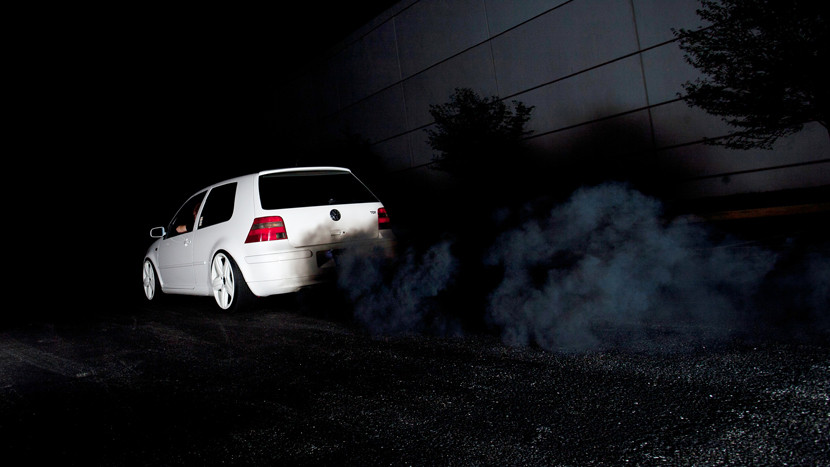Smoke
It’s hard to talk about diesel engines and diesel tuning without talking about smoke. Whether you are prepared to tolerate a little smoke for maximum performance or you like to stay under the radar with a smoke free tune, it is a topic of much debate, and there is a lot more to it than you may think.
BLACK SMOKE
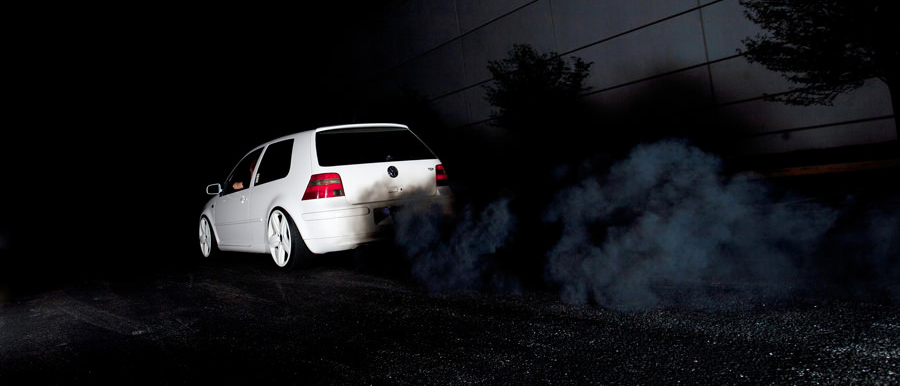
Visible smoke from the exhaust of a vehicle is not exclusive to diesels, but it is the black smoke produced from some tuned diesel vehicles which most of us think of when we talk about smoke. Black smoke from the tailpipe is soot, which is produced when some fuel hasn’t burned properly. Usually this is due to one of two reasons - not enough air to burn the fuel, or not enough time for it to burn.
In a tuned vehicle, fuelling is increased to make sure all of the air available is used up for maximum power. This means there is lots of fuel relative to the amount of air - the measure of how much fuel there is relative to how much air there is is called the Air to Fuel Ratio (AFR). The lower the AFR value, the more smoke is visible.
There is a tipping point where the amount of air flowing through the engine is low enough that all the fuel can't burn cleanly - it is at this AFR where the first haze of smoke will start to occur. If more fuel is added past this point, there will be more smoke.
Usually black smoke is seen at full throttle, when the most fuel is being injected for maximum power. Badly tuned vehicles, however, can produce thick black smoke almost all the time. There is generally no reason for a vehicle to produce black smoke during normal cruising or gentle driving - there should always be plenty of air and a high AFR.
Usual Causes of black smoke:
- Low AFR due to tuning
- Too long injection duration
- Boost leaks
- Underboosting Turbo
- Bad Injectors
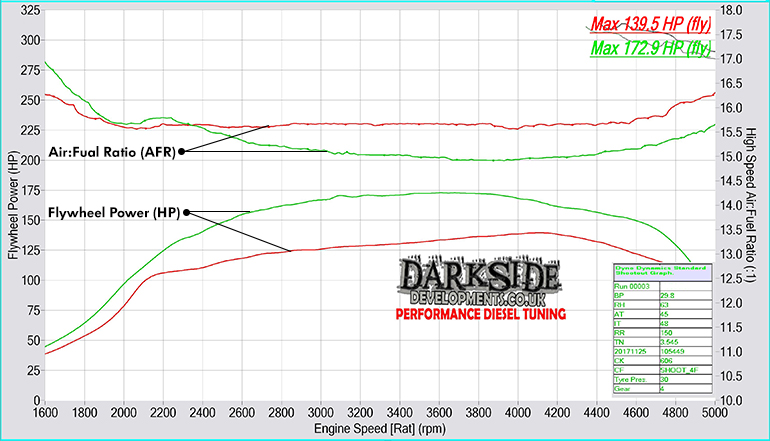
In general, the presence of black smoke alone is not an indicator of an engine being in poor health. Its an easily visible indicator of the Air to Fuel ratio the vehicle is running - if you notice an increase in the levels of black smoke, something is causing the Air to Fuel ratio to increase. As the fuelling is controlled by the ECU, it is much more likely that something is reducing the amount of air present.
If you have recently had an ECU map and have only just stopped smiling and looking forwards, its likely the thick black streak in your rear view mirror is usually a result of a slightly over enthusiastic tune running an extended injection duration.
If you can hear the turbo spooling louder, a hiss or recently heard a popping noise, it is likely you have a boost leak or blown a pipe. Usually if this is the case you can see visible oil around the route of the leak (commonly the VW clip connectors).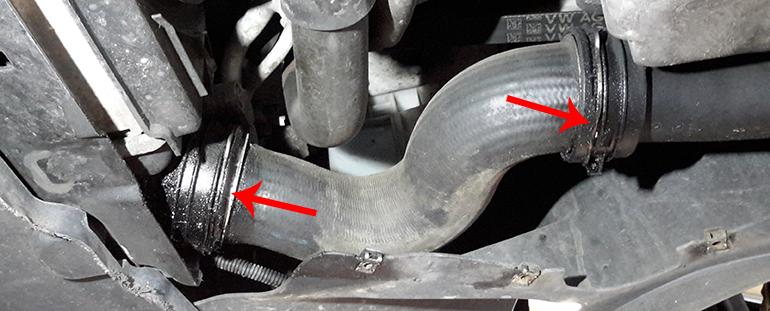
The Vacuum system is another achilles heel of many diesel engines. Vacuum is used to control the turbo actuator, so even a tiny leak will cause underboost and eventually the VNT mechanism may become sticky and a new turbo required.
Bad injectors, normally found on high mileage engines, are another cause of black smoke (and lack of power). Some companies sell miracle cures that you add to the diesel tank but these rarely work on a high pressure fuel system. The injector nozzles are a wear item, and after 100,000 miles are usually past their best.
More Smoke, More Poke or No Smoke, No Poke
The amount of visible smoke that is acceptable is entirely based upon customer preference, we always ask our customers this question, but its not a simple one for them to answer or for us to advise. You cannot expect 100% of the power potential from any engine setup and expect zero visible smoke, as a rough estimate you will have to sacrifice as much 10% peak power and torque to achieve this.
After a certain point (each engine is different), no amount of fuel will increase the power output and long before this point is reached there is a period of diminishing returns where smoke increases drastically for a minor increase in power. If a customer does not care about smoke or even says they want as much as possible, we still have a duty of care to ensure we are not just adding fuel unnecessarily, so testing has to be done to know where these ‘limits’ are.
Excessive smoke has downsides that go beyond annoying the local constabulary and anyone following behind. Extra heat is generated and this hot gas travels past the pistons, head, valves, manifold and turbo which increases surface temperatures of all these materials. This heat has to go somewhere, and once the water and oil cooling systems begin to be saturated the materials will fail, so this is why VNT mechanisms and pistons melt or heads crack.
It’s not uncommon to see exhaust gas temperatures (EGT) exceeding 1000℃, which is a major concern when aluminium melts at 660℃, Luckily a good engine package will be adequately cooled and the cold fresh air from the intercooler entering the engine will keep the surface temperatures below melting point. The piston bowl area is the part of an engine closest to its melting point in standard tune, so we take great care to ensure we don't push too hard and cause terminal engine damage.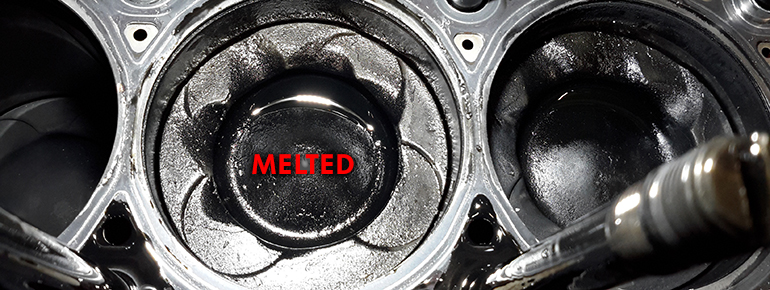
DPF’s and Black smoke
It is important to remember that regardless of the tune, a DPF equipped car will not usually emit any black smoke. This is because the DPF is capable of trapping all of the soot produced by the engine. If a DPF equipped car has a ‘smoky’ tune, all of that smoke will be clogging the DPF rather than exiting the tailpipe. This also means that if a car with a DPF is producing noticeable smoke, the DPF is very likely to have been removed or damaged.
WHITE SMOKE
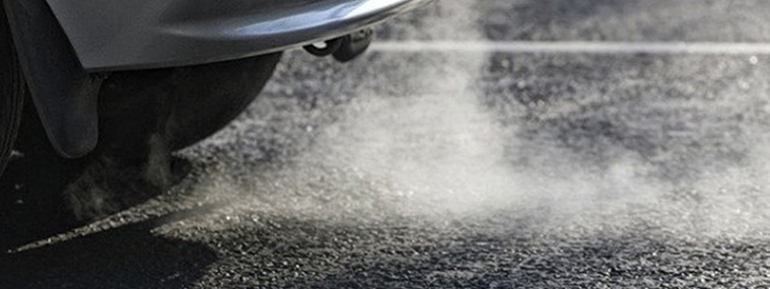
Black smoke is not the only smoke you might see from a diesel tailpipe - especially on a cold morning, you may well have seen white smoke. Not to be confused with steam from a cracked head or leaking EGR cooler, or even just condensation in the exhaust, white smoke is completely unburnt diesel fuel exiting the tailpipe. The reason it is common to see white smoke after a cold start is that diesel engines require a high fuel quantity to start in cold conditions. The cold fuel does not burn as easily, and the excess produces the visible white smoke.
Common rail vehicles with the DPF removed will usually see a small amount of white smoke due to the lower compression engine, you don’t see this with a functional DPF. We always remove post injection in the software that is there mainly to keep the DPF hot for regernaration purposes.
Incorrect pump timing can also be problematic on early VE engines, this will also give a distinct smelly white smoke.
BLUE SMOKE
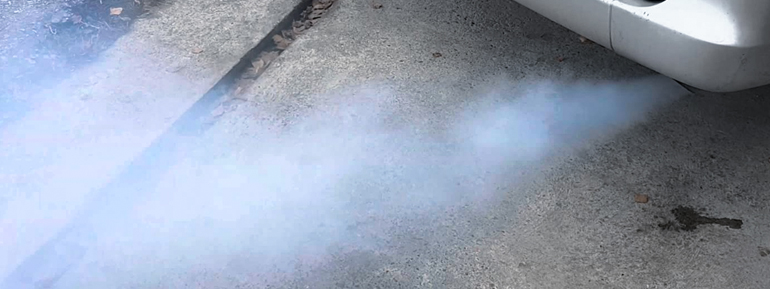
The third main type of smoke you might see is blue smoke. Blue smoke is of course not bright blue in colour - it is more of a pale grey with a distinctive blue tinge to it. It can be hard to spot for the inexperienced, but if you have seen it once before you cannot miss it. If you have seen blue smoke, unfortunately it is almost always bad news.
Blue smoke is caused by the burning of engine oil. This means that for some reason, oil is getting into either the intake, exhaust, or worst of all into the engine itself. There are a few common places where this oil can be leaking.
Turbocharger - if the seals start to fail in the turbocharger, oil can leak into the turbine or compressor housings. Luckily, as the turbocharger is its own unit, this can be removed and replaced or reconditioned.
Piston Rings - in high mileage engines, wear in the piston rings and bores reduces their ability to control the oil from entering the combustion chamber. This causes oil to be burned and produce smoke. Repair usually requires an engine rebuild.
Valve Stem Oil Seals - another common place for oil to leak is from the valve stem oil seals in the cylinder head. Replacement requires removal of the valves, and therefore the cylinder head has to be removed making this a substantial job.
Head Gasket - Head Gasket failure allows oil, coolant and combustion gases to mix. Depending on the nature of the failure the symptoms can change, but blue smoke from the exhaust can sometimes be visible. Repair requires the removal of the cylinder head and in most cases we see, a full strip down of the bottom end to skim the block deck surface for a perfect seal.
All of the above are generally caused by wear and tear, or if the engine or turbo is new, a poor build. It is common to see these issues on older engines with high mileages, and often when tuning an old engine, the increased loads, pressures and temperatures can make a blue smoke problem more apparent. In these older engines, it is rarely one issue causing the smoke, and more often is a combination of wear in all the areas described allowing a little oil to burn.
Hopefully this short blog will help diagnose what issue you have more quickly and help you to understand that ‘more Smoke, more Poke’ is only half true!
Recent Posts
-
Wheel Spacers - What to know
Wheel Spacers Wheel spacers are unquestionably one of the simplest and cheapest modifications to enh …06 03 2025 -
Donington GP - Roadsports & ClubEnduro - 750MC - 12th & 13th October 2024
With just over a month since our fantastic 1-2 finish at Oulton Park, it was another RoadSports and …01 11 2024 -
Oulton Park - ClubEnduro - 750MC - 21st September 2024
After a great result at Silverstone, we had a 5 week break before we out again, this time for a 100 …07 10 2024

